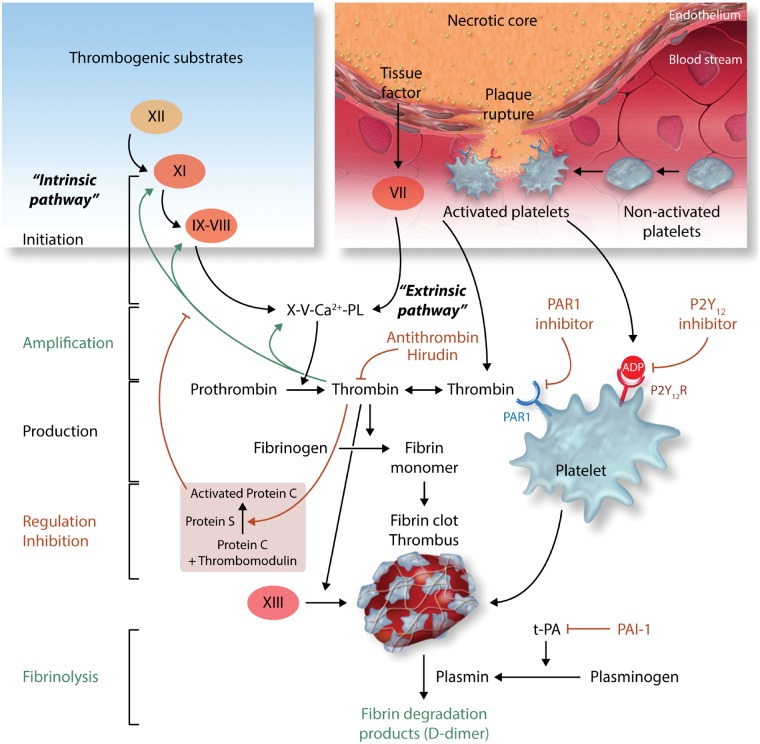Figure 3.
Initiation, amplification and feedback anticoagulant mechanisms in the coagulation cascade. The different phases, from initiation of coagulation due to exposure of tissue factor and binding of its ligand factor VII/VIIa either at a wound/extravascular site or in the intravascular compartment (microvesicles), designated as ‘extrinsic pathway’, to amplification and production of thrombin by the positive feedback reactions of the ‘intrinsic pathway’ are indicated. In parallel to fibrin clot formation, the majority of thrombin will distantly bind to its endothelial cell receptor thrombomodulin to induce the activation of protein C (PC) into APC, which limits further thrombin production by degrading the procoagulant cofactors VIIIa and Va. While these reactions are sufficient to achieve wound healing upon physiological haemostasis, when an atherosclerotic plaque ruptures, thrombogenic substrates are exposed that can initiate (auto-) activation of the factor XII-dependent reactions of the contact phase, resulting in enhanced thrombin generation and hence, fibrin clot formation and eventually thrombosis. The inhibitors mentioned in the text are indicated in red.

